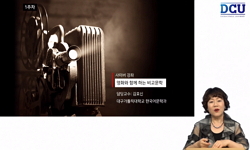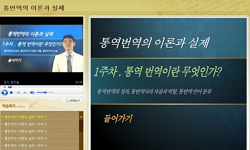Although the concept of World Literature (as a theory) is a necessity, it is also at the center of much academic controversy. Common questions about the definition of World Literature include the following: 'who' decides what is World Literature? Once...
http://chineseinput.net/에서 pinyin(병음)방식으로 중국어를 변환할 수 있습니다.
변환된 중국어를 복사하여 사용하시면 됩니다.
- 中文 을 입력하시려면 zhongwen을 입력하시고 space를누르시면됩니다.
- 北京 을 입력하시려면 beijing을 입력하시고 space를 누르시면 됩니다.

민족문학-세계문학론의 비판적 검토 : 경쟁적 모델과 순환적 모델 = A Critical Study on Minjok-World Literature : Competitive Model and Circulatory Model
한글로보기부가정보
다국어 초록 (Multilingual Abstract)
In this paper, we have attempted to examine the pros and cons of the competitive and the circulatory models of World Literature that the Western academics are actively discussing today. The competitive model that Casanova and Moretti suggest do not consider elements other than that of 'nation' and 'competition', and understand World Literature as a model that is based on the competition among the nations only. Damrosch's theory of World Literature focuses on various and fluid circulation and distribution of literary works, and can be called the 'circulatory model.'We seek to examine how the competitive model of the Minjok-World Literature, which represents the Korean theory of World Literature, formulates its reasoning, and what kind of issues emerge from this logic, and how the circulatory model may reveal certain aspects that are not paid attention to in the competitive model. The reason why Casanova and Moretti's competitive model is important for the theory of Minjok-World Literature is because the model places high regard on the possibility of marginal literature. In this view, Korean Literature belongs in the sphere of marginal literature, and the competitive model assumes that such literature has a higher possibility to reform in the field of World Literature than those literatures of nations at the center. On the other hand, in the competitive model, the problems of translation and writing cannot be considered closely. An attempt to expand the sphere of conceptual meaning through negotiating with the concept of 'World Literature' is important. However, this can only be problematic if such a discussion ultimately returns to the basic field of the Minjok (ethno-nationalist) literature. There is a need to reason Korean theory of World Literature not as a competitive model but fas a circulatory model.
Although the concept of World Literature (as a theory) is a necessity, it is also at the center of much academic controversy. Common questions about the definition of World Literature include the following: 'who' decides what is World Literature? Once that is answered, 'where' is World Literature to be located? When we say World Literature, 'what' kind of literature do we mean? When we say 'World", 'whose' world do we mean? What is the method of defining this 'World'? Can we accept and agree with this definition? Despite such controversies that surround World Literature, the concept has emerged as the core issue of current comparative literary studies.
In this paper, we have attempted to examine the pros and cons of the competitive and the circulatory models of World Literature that the Western academics are actively discussing today. The competitive model that Casanova and Moretti suggest do not consider elements other than that of 'nation' and 'competition', and understand World Literature as a model that is based on the competition among the nations only. Damrosch's theory of World Literature focuses on various and fluid circulation and distribution of literary works, and can be called the 'circulatory model.'We seek to examine how the competitive model of the Minjok-World Literature, which represents the Korean theory of World Literature, formulates its reasoning, and what kind of issues emerge from this logic, and how the circulatory model may reveal certain aspects that are not paid attention to in the competitive model. The reason why Casanova and Moretti's competitive model is important for the theory of Minjok-World Literature is because the model places high regard on the possibility of marginal literature. In this view, Korean Literature belongs in the sphere of marginal literature, and the competitive model assumes that such literature has a higher possibility to reform in the field of World Literature than those literatures of nations at the center. On the other hand, in the competitive model, the problems of translation and writing cannot be considered closely. An attempt to expand the sphere of conceptual meaning through negotiating with the concept of 'World Literature' is important. However, this can only be problematic if such a discussion ultimately returns to the basic field of the Minjok (ethno-nationalist) literature. There is a need to reason Korean theory of World Literature not as a competitive model but fas a circulatory model.
참고문헌 (Reference)
1 김윤식, "한국어로써 한국어 글쓰기를 넘어서기는 어떻게 가능한가, In 다국적 시대의 우리소설 읽기" 문학동네 2010
2 김연수, "한국어는 과연 산문문장에 적합한 언어일까?" 2009
3 밀란 쿤데라, "커튼" 민음사 2010
4 Eileen Julien, "최근의 세계문학 논쟁과 (반)주변부" 영미문학연구회 (18) : 117-133, 2005
5 조영일, "세계문학의 구조" 도서출판 b 2011
6 유희석, "세계문학에 관한 단상: 프랑꼬 모레띠의 발상을 중심으로" 영미문학연구회 (18) : 134-153, 2005
7 김영희, "세계문학론" 창비 2010
8 김영하, "문화적 돌연변이" 인천문화재단 7 : 2007
9 이현우, "로쟈의 세계문학 다시 읽기" 오월의 봄 2012
10 김연수, "내 몸의 이토록 협소한 정치적 감각" 2007
1 김윤식, "한국어로써 한국어 글쓰기를 넘어서기는 어떻게 가능한가, In 다국적 시대의 우리소설 읽기" 문학동네 2010
2 김연수, "한국어는 과연 산문문장에 적합한 언어일까?" 2009
3 밀란 쿤데라, "커튼" 민음사 2010
4 Eileen Julien, "최근의 세계문학 논쟁과 (반)주변부" 영미문학연구회 (18) : 117-133, 2005
5 조영일, "세계문학의 구조" 도서출판 b 2011
6 유희석, "세계문학에 관한 단상: 프랑꼬 모레띠의 발상을 중심으로" 영미문학연구회 (18) : 134-153, 2005
7 김영희, "세계문학론" 창비 2010
8 김영하, "문화적 돌연변이" 인천문화재단 7 : 2007
9 이현우, "로쟈의 세계문학 다시 읽기" 오월의 봄 2012
10 김연수, "내 몸의 이토록 협소한 정치적 감각" 2007
11 박성창, "글로컬 시대의 한국문학" 민음사 2009
12 박선주, "궐위의 시대 학문의 지평 글로벌 연구의 동향" 영미문학연구회 (25) : 252-276, 2008
13 David Damrosch, "World Literature in a Postcanonical, Hypercanonical Age, In Comparative Literature in an Age of Globalization" Johns Hopkins Univ. Press 2006
14 David Damrosch, "What is World Literature?" Princeton UP 2003
15 David Damrosch, "Teaching World Literature" MLA 2009
16 Pascale Casanova, "La République mondiale des lettres" Gallimard 1999
17 Franco Moretti, "Conjectures on World Literature" 1 : 2000
18 Charles Forsdick, "'Worlds in Collision : The Language and Locations of World Literature, In A Companion to Comparative Literature" Wiley-Blackwell 2011
동일학술지(권/호) 다른 논문
-
일반논문 : 한영 문학번역에서 의미의 정착: 「지 알고 내 알고 하늘이 알건만」의 영역본의 분석에 근거해서
- 한국비교문학회
- 박옥수 ( Ock Sue Park )
- 2013
- KCI등재
-
- 한국비교문학회
- 최라영 ( Ra Young Choi )
- 2013
- KCI등재
-
일반논문 : 문학텍스트에 나타난 문화비교와 영어 학습전략
- 한국비교문학회
- 이일연 ( Il Youn Yi )
- 2013
- KCI등재
-
일반논문 : 오카쿠라 덴신(岡倉天心)의 일본미술 발견과 야나기 무네요시(柳宗悅)의 공예를 둘러싼 근대의식
- 한국비교문학회
- 이병진 ( Byung Jin Lee )
- 2013
- KCI등재
분석정보
인용정보 인용지수 설명보기
학술지 이력
| 연월일 | 이력구분 | 이력상세 | 등재구분 |
|---|---|---|---|
| 2026 | 평가예정 | 재인증평가 신청대상 (재인증) | |
| 2020-01-01 | 평가 | 등재학술지 유지 (재인증) |  |
| 2017-01-01 | 평가 | 등재학술지 유지 (계속평가) |  |
| 2013-01-01 | 평가 | 등재학술지 유지 (등재유지) |  |
| 2010-01-01 | 평가 | 등재학술지 유지 (등재유지) |  |
| 2008-01-01 | 평가 | 등재학술지 유지 (등재유지) |  |
| 2005-01-01 | 평가 | 등재학술지 선정 (등재후보2차) |  |
| 2004-01-01 | 평가 | 등재후보 1차 PASS (등재후보1차) |  |
| 2002-07-01 | 평가 | 등재후보학술지 선정 (신규평가) |  |
학술지 인용정보
| 기준연도 | WOS-KCI 통합IF(2년) | KCIF(2년) | KCIF(3년) |
|---|---|---|---|
| 2016 | 0.19 | 0.19 | 0.26 |
| KCIF(4년) | KCIF(5년) | 중심성지수(3년) | 즉시성지수 |
| 0.24 | 0.23 | 0.629 | 0.15 |





 KCI
KCI






